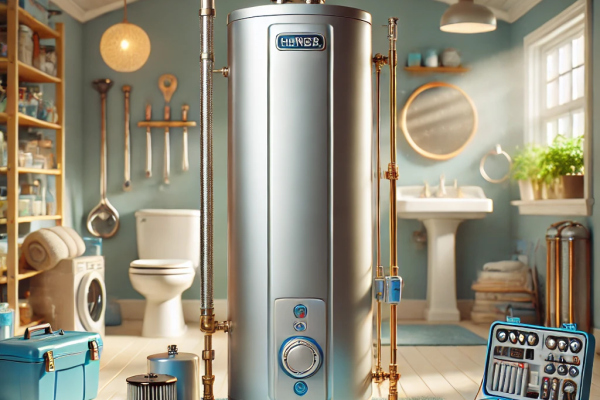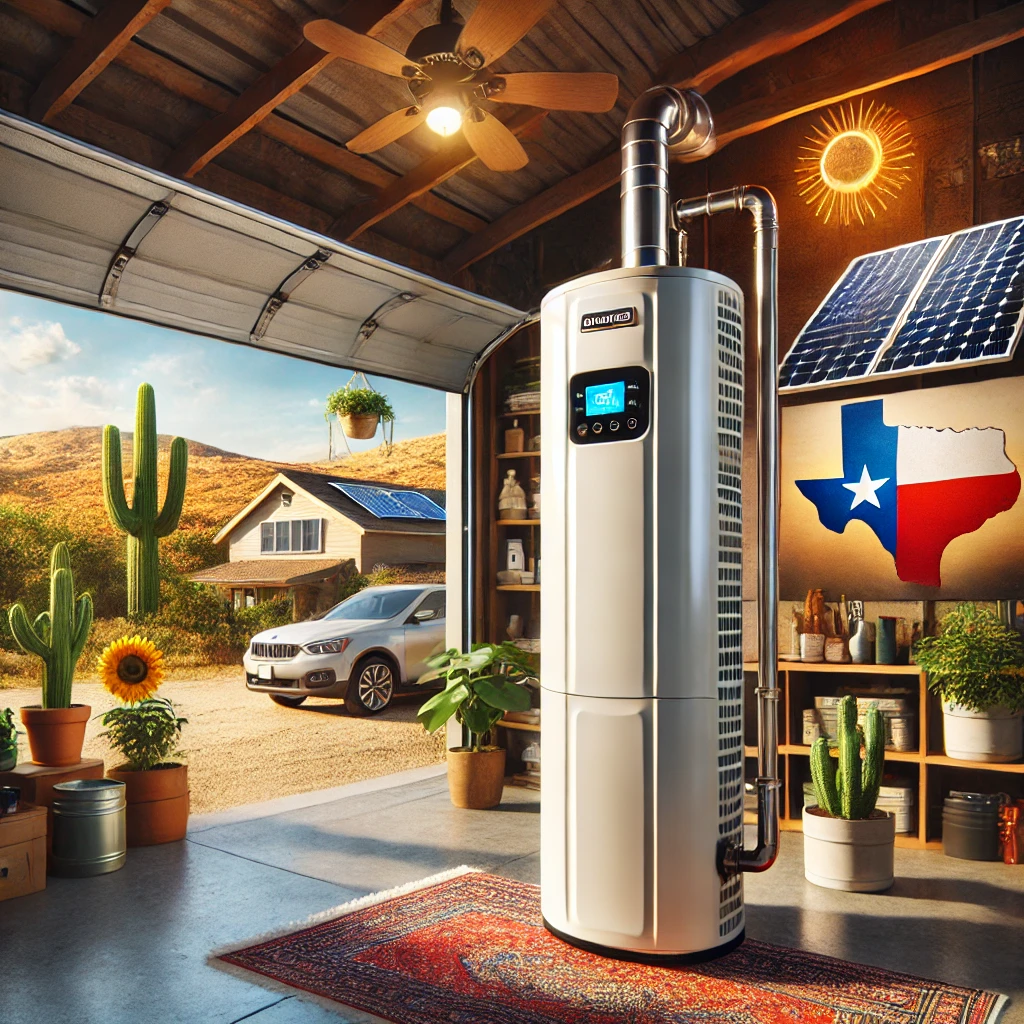
How to Extend the Life of Your Water Heater: Essential Maintenance Tips
A cold shower to start your day is never a pleasant experience. To avoid such unfortunate surprises, it's crucial to incorporate regular water heater maintenance into your home upkeep routine. By performing simple maintenance tasks, you can not only extend the life of your water heater but also reduce your water and energy bills. This is particularly important for homeowners in Texas, where the hot climate can put extra strain on your water heating system, increasing energy consumption if it's not properly maintained.
Why Water Heater Maintenance Matters
Your water heater is more than just a metal tank filled with water; it’s a sophisticated system that ensures your home remains comfortable, even during the coldest winter mornings. Regular inspections and upkeep every six months are essential to preventing unexpected breakdowns and extending the lifespan of your water heater. In Texas, the constant heat can lead to quicker wear and tear, making maintenance even more critical.
Additionally, neglecting to service your water heater can lead to the accumulation of sediment inside the tank, which reduces the system’s efficiency. This results in higher energy consumption and inflated utility bills. Instead of paying more for energy, why not take a few preventative steps to improve your water heater’s efficiency?
What You Should Check During Your Water Heater Inspection
Before you dive into more in-depth maintenance tasks, start by conducting a simple visual inspection of your water heater. Here's what you should be on the lookout for:
1. Water Temperature
If you've noticed your hot water temperature fluctuating—either becoming too hot or not hot enough—it might be a sign of issues with the thermostat or heating element. If water takes longer to heat up or cools down quicker than usual, this could be a symptom of inefficiency. Addressing these issues early on can prevent further complications and energy waste.
2. Leaks and Damage
Take the time to check your water heater for any visible damage. Look for cracks, rust, drips, or puddles around the base of the tank. Small leaks can easily turn into larger issues, potentially flooding your space and causing expensive repairs. It’s better to address them promptly.
3. Flame on Gas Models
For those with gas water heaters, the burner flame is an important indicator of system health. The flame should be bright blue; a yellow or orange flame indicates incomplete combustion, which could be due to insufficient oxygen or a clogged burner. If this is the case, it may be time to clean the burner or call a technician to inspect the system.
Key Water Heater Maintenance Steps
After performing a visual inspection, follow these simple maintenance steps to keep your water heater in top condition and maximize its longevity.
1. Checking the Pressure Relief Valve
The pressure relief valve is a critical safety feature designed to prevent excessive pressure from building up inside the tank. If this valve becomes stuck or faulty, it can lead to severe damage, including a potential explosion. To prevent this, it’s important to check the valve regularly.
How to Check the Valve:
- Locate the pressure relief valve, typically on the top or side of the tank.
- Open the valve manually and allow hot water to flow out through the drain outlet.
- Close the valve once the water flows freely. If it doesn’t, or if it’s difficult to open, you may need to call a professional plumber for further inspection.
2. Flushing the Tank to Remove Sediment
Sediment buildup is one of the most common problems that affect water heaters. Over time, minerals from the water, especially in areas with hard water, accumulate at the bottom of the tank. These deposits reduce heating efficiency and can even cause corrosion over time.
Steps to Flush the Tank:
- Turn off the power supply (electric or gas) to the heater.
- Shut off the cold water supply valve to the tank.
- Attach a garden hose to the drain valve and direct the other end to a safe drainage area (like a floor drain or outside).
- Open both the drain valve and the pressure relief valve to let the water flow out and remove sediment from the bottom of the tank.
- Close the valves, turn the cold water supply back on, and refill the tank.
- Power the water heater back on.
Flushing the tank takes about an hour, but this simple task can significantly improve the efficiency and lifespan of your water heater.
3. Replacing the Anode Rod
The anode rod is a metal component that prevents the tank from corroding. Over time, the anode rod wears out and must be replaced to maintain the integrity of the tank. In most cases, it’s recommended to replace the anode rod every 3-5 years.
How to Replace the Anode Rod:
- Locate the anode rod, which is typically found on the top of the tank.
- Use a wrench to remove the old rod and replace it with a new one.
- Tighten the new rod securely in place.
Replacing the anode rod is an inexpensive way to prevent corrosion and ensure your water heater lasts longer. The cost of a new rod typically ranges between $20 and $50, much cheaper than having to replace the entire water heater.
When to Call a Professional
While routine maintenance tasks can usually be handled by homeowners, certain water heaters, especially advanced models like tankless systems, heat pump units, or solar water heaters, require professional attention. These systems contain high-tech components that are not ideal for DIY servicing.
If your water heater is over 10 years old, is experiencing frequent leaks, or provides inconsistent water temperatures, it may be time for a professional to assess the system. In Texas, solar water heating systems are becoming increasingly popular due to their efficiency in the hot climate, and a qualified technician will be able to help you evaluate whether it’s time for an upgrade.
Additional Tips for Homeowners in Texas
Living in Texas means enduring a hot climate, which presents unique challenges for your water heater. Here are some tips specifically for homeowners in this region:
1. Insulate Your Water Heater
Even in a warm climate like Texas, insulating your water heater can help retain heat and reduce energy consumption. Insulation blankets are widely available and can be installed easily.
2. Install a Timer
Consider installing a timer on your water heater. A timer will automatically shut off the water heater during periods when you don't need hot water, such as overnight or while you’re at work. This can save you significant amounts on your electricity bill.
3. Utilize Solar Energy
Given Texas’s abundant sunshine, solar water heating systems are an excellent investment. By harnessing solar energy, you can reduce your reliance on traditional energy sources, which can significantly lower your utility costs.
Choosing the Right New Water Heater
If your current water heater is nearing the end of its lifespan, it may be time to invest in a replacement. Here are some factors to keep in mind when selecting a new water heater:
1. Type of Water Heater
You’ll need to choose between different types of water heaters: traditional tank models, tankless units, heat pumps, or solar systems. In Texas, solar water heaters are particularly advantageous, given the climate.
2. Energy Efficiency
Opt for a water heater with a high energy efficiency rating, such as those with the Energy Star label. A more efficient unit will save you money over the long term.
3. Tank Capacity
For a family of 3-4 people, a 50-gallon tank is usually sufficient. However, consider your household’s specific water needs when choosing the right size.
4. Professional Installation
Ensure your new water heater is installed by a licensed professional. Proper installation is essential for maximizing the performance and lifespan of the unit.
Conclusion
Maintaining your water heater doesn’t have to be a daunting task. By performing regular inspections and following these straightforward maintenance steps, you can ensure your system runs smoothly for years to come. For homeowners in Texas, proper care of your water heater not only enhances its efficiency but can also significantly reduce energy consumption in the long run. Start implementing these maintenance tips today, and enjoy a reliable, energy-efficient water heater!






